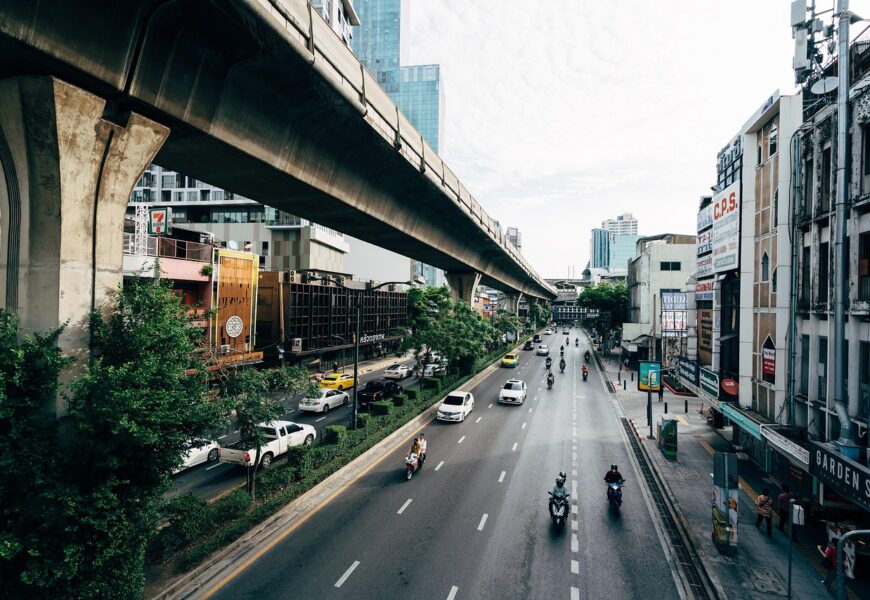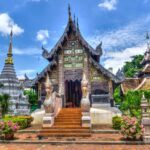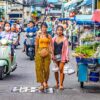Thailand, a vibrant Southeast Asian nation, boasts an incredible array of cities that blend ancient traditions with modern dynamism. From bustling metropolitan centers to historic cultural hubs, Thailand’s urban landscapes offer travelers and residents a remarkable journey through diverse experiences. Each city presents a unique tapestry of architectural marvels, cultural heritage, economic opportunities, and stunning natural surroundings that capture the essence of Thai life. Understanding these urban centers provides profound insights into the country’s complex social fabric, economic development, and rich cultural traditions.
Bangkok: The Pulsing Metropolitan Heart
Bangkok, Thailand’s capital and largest city, represents an extraordinary urban ecosystem that seamlessly blends traditional Thai culture with cutting-edge modernity. Home to over 10 million residents, this metropolis serves as the country’s primary economic, political, and cultural center. The city’s skyline features an impressive mix of gleaming skyscrapers, historic temples, and traditional neighborhoods that showcase Thailand’s remarkable transformation. Major districts like Sukhumvit and Silom represent contemporary urban development, while areas such as Rattanakosin preserve centuries-old architectural and cultural heritage.
Bangkok’s infrastructure continues to evolve rapidly, with advanced transportation systems including the BTS Skytrain and extensive metro networks connecting various city sectors. The urban economy thrives on diverse industries, including finance, technology, tourism, and manufacturing. International corporations frequently establish regional headquarters here, recognizing Bangkok’s strategic importance in Southeast Asian business landscapes.
Chiang Mai: Cultural and Northern Jewel
Located in northern Thailand, Chiang Mai represents a stark contrast to Bangkok’s metropolitan intensity. This historic city, nestled among mountainous terrain, serves as a cultural and artistic hub with over 300 temples and a rich indigenous heritage. Founded in 1296 as the capital of the Lanna Kingdom, Chiang Mai maintains a more relaxed atmosphere compared to other major Thai cities. Its old city, surrounded by ancient walls and moats, provides visitors with a glimpse into traditional Thai urban design and architectural aesthetics.
The city has emerged as a significant center for digital nomads and creative professionals, attracting international talent with its affordable living costs, high-quality infrastructure, and vibrant cultural scene. Universities and educational institutions contribute significantly to the local economy, fostering innovation and intellectual growth. Chiang Mai’s tourism sector continues to expand, with visitors drawn to its unique cultural experiences, traditional crafts, and proximity to natural attractions.
Phuket: Tropical Urban Paradise
Phuket, Thailand’s largest island, represents a unique urban environment that combines coastal living with sophisticated infrastructure. As a major tourist destination, the city attracts millions of international visitors annually, contributing substantially to Thailand’s tourism economy. Modern resorts, international restaurants, and world-class entertainment venues coexist with traditional fishing communities and historic Sino-Portuguese architectural districts. The urban landscape reflects a cosmopolitan character shaped by global influences and local traditions.
The city’s economy relies heavily on tourism, hospitality, and related service industries. Advanced infrastructure, including an international airport and modern healthcare facilities, supports both resident and visitor needs. Phuket’s urban development demonstrates Thailand’s capacity to create sophisticated urban environments that preserve cultural authenticity while embracing global standards of living and economic opportunity.
Chiang Rai: Northern Frontier City
Situated in Thailand’s northernmost region, Chiang Rai represents a fascinating urban center characterized by its proximity to neighboring countries and unique cultural diversity. The city serves as a crucial economic and cultural gateway, connecting Thailand with Myanmar and Laos. Its strategic location has historically influenced trade, migration, and cultural exchange, creating a distinctive urban identity that differs significantly from other Thai cities.
Chiang Rai’s urban landscape features a blend of traditional Thai architecture, hill tribe influences, and contemporary development. The city has gained recognition for its artistic heritage, with numerous galleries and cultural centers showcasing local and regional artistic expressions. Agricultural and tourism sectors play significant roles in the local economy, with sustainable development initiatives gaining increasing importance.
Emerging Urban Dynamics
Thailand’s urban centers continue to evolve, reflecting broader national economic and social transformations. Cities are increasingly adopting smart technologies, sustainable development practices, and innovative urban planning strategies. Government initiatives focus on creating more livable, efficient, and environmentally conscious urban environments that can compete on a global scale.
The future of Thai cities lies in balancing technological advancement with cultural preservation, creating urban spaces that honor traditional values while embracing global opportunities. Each city offers unique characteristics that contribute to Thailand’s complex and dynamic urban landscape, presenting exciting possibilities for residents and visitors alike.
Understanding Thailand’s cities reveals a nation in continuous transformation, where ancient traditions and modern aspirations coexist harmoniously. From Bangkok’s global metropolis to Chiang Mai’s cultural sanctuary, these urban centers represent the multifaceted nature of Thai society. Travelers and researchers alike can discover profound insights into Thailand’s social, economic, and cultural dynamics by exploring these remarkable cities, each offering a distinctive window into the country’s rich and evolving urban experience.









